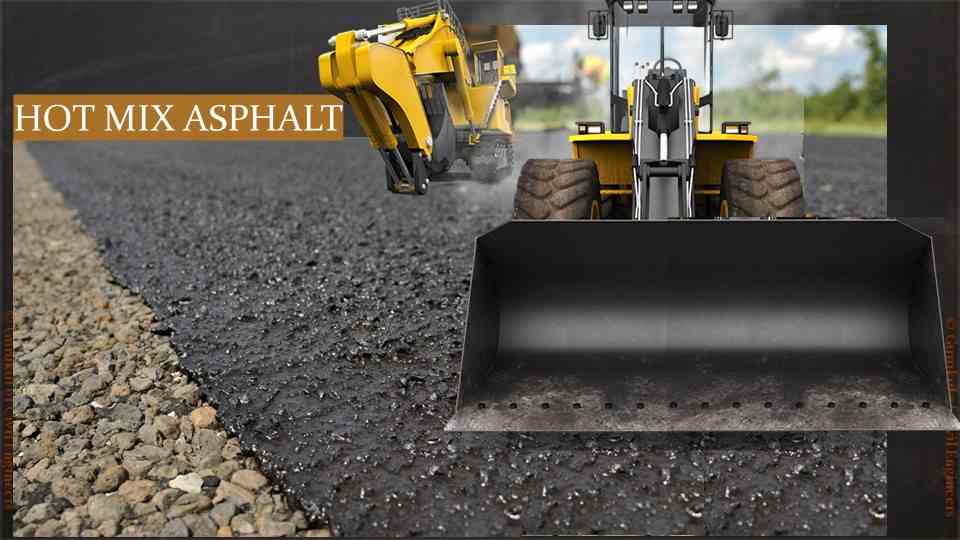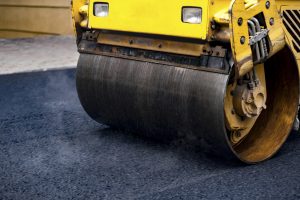Reimagine Your Area: Hot Mix Asphalt Paving for Angled Parking Lot Jobs
Reimagine Your Area: Hot Mix Asphalt Paving for Angled Parking Lot Jobs
Blog Article
Unlocking the Tricks of Hot Mix Asphalt Innovation
Discovering the midsts of warm mix asphalt innovation reveals a world where precise solutions and meticulous procedures merge to form our roadways and framework. The blend of accumulations, fillers, and binders isn't simply a building task but a strategic orchestration of resilience and efficiency. As we peer into the detailed dancing of elements, a tapestry of durability and sustainability unfolds. But what exists underneath this surface of asphaltic mastery, and what keys wait to be introduced in the realm of paving innovations?
Significance of Warm Mix Asphalt
Warm Mix Asphalt plays a crucial duty in modern infrastructure growth because of its sturdiness and cost-effectiveness. As the most frequently used leading material for roadways, highways, and vehicle parking lots, Warm Mix Asphalt offers a variety of benefits that add to its value in construction jobs. One vital advantage is its capacity to withstand hefty traffic lots and severe weather, supplying a resilient and reputable surface area for transport networks. In Addition, Warm Mix Asphalt is cost-effective in both preliminary construction and long-lasting maintenance, making it a favored selection for several facilities tasks.
The sturdiness of Hot Mix Asphalt stems from its make-up, which consists of aggregates, binder, and filler products that are very carefully selected and blended to satisfy specific efficiency demands. In general, the significance of Hot Mix Asphalt in framework advancement can not be understated, as it proceeds to be a cornerstone of modern-day building and construction techniques.
Parts of Asphalt Mixes
The make-up of asphalt blends consists of very carefully picked aggregates, binder, and filler materials that are crucial for accomplishing specific efficiency requirements. Aggregates are the key part of asphalt mixes, offering toughness and security. The binder, typically asphalt or asphalt concrete, holds the aggregates with each other and provides flexibility and toughness to the mix.
The mix and percentage of these components play a considerable duty in determining the quality and performance of the asphalt mix. Designers carefully design the mix to satisfy details needs, thinking about aspects like web traffic quantity, climate conditions, and pavement lifespan. Proper choice and harmonizing of aggregates, binder, and fillers are necessary for creating durable, resilient asphalt pavements.
Combining and Manufacturing Techniques

Once the aggregates are selected, the binder, typically asphalt cement, is contributed to bind the materials together. The binder's quality and quantity considerably affect the mix's flexibility, resistance, and toughness to ecological aspects. In addition, fillers like hydrated lime or Portland cement might be included to improve certain attributes of the asphalt mix, such as its workability or wetness resistance.
During production, the accumulations and binder are heated up, usually between 250-325 ° F(121-163 ° C ), to facilitate mixing and make certain correct finish of the aggregates. The mixing procedure has to be detailed to attain an uniform mix that promotes the wanted efficiency qualities of the asphalt. Numerous strategies, such as batch blending or drum blending, are employed to attain top notch and constant asphalt mixes for building and construction jobs.
Factors Influencing Asphalt Efficiency
Variables affecting asphalt performance incorporate a series of variables that affect the resilience, long life, and total high quality of asphalt pavements. One vital aspect is the high quality of products used in the asphalt mix. The kind and source of accumulations, the binder quality, and the ingredients all play a considerable duty in identifying the efficiency of the asphalt pavement. The rank of accumulations is crucial as it impacts the mix's workability, stability, and resistance to rutting and fracturing.

Environmental problems also affect asphalt performance. Temperature variants, moisture seepage, and traffic tons can all influence the structural honesty of the pavement. Style factors to consider, such as pavement thickness and water drainage, are vital in ensuring the long-lasting efficiency of the asphalt pavement. By thoroughly taking into consideration these specialists, designers and factors can optimize asphalt performance and improve the life span of sidewalks.
Sustainable Practices in Asphalt Technology

WMA enables for the production and positioning of asphalt mixes at reduced temperatures contrasted to conventional hot-mix asphalt, resulting in minimized power consumption and greenhouse gas exhausts. The use of porous asphalt mixes can aid alleviate stormwater runoff concerns by allowing water to infiltrate via the pavement and into the ground, advertising all-natural go to this web-site water filtration and charge procedures.
Conclusion
To conclude, warm mix asphalt technology plays an important duty in modern-day framework growth as a result of its sturdiness and cost-effectiveness. By very carefully stabilizing elements, using correct blending strategies, and taking into consideration numerous variables, designers can develop high-grade asphalt blends that hold up against rush hour tons and extreme weather condition problems. Accepting sustainable practices, such as using recycled materials and warm-mix modern technologies, additionally improves the environmental friendliness of asphalt modern technology.
Blending and production techniques in warm mix asphalt modern technology include the accurate mix and handling of aggregates, binder, and fillers see this website to create a high-performance and sturdy asphalt mix.Aspects influencing asphalt performance incorporate a variety of variables that impact the longevity, long life, and general quality of asphalt sidewalks. Sustainable techniques in asphalt innovation include various campaigns aimed at lowering the ecological impact of asphalt manufacturing and paving procedures. By incorporating recovered asphalt pavement (RAP) and recycled asphalt tiles (RAS) into brand-new asphalt mixes, the sector can substantially reduce the intake of raw materials and power, while also reducing landfill waste.
WMA enables for the manufacturing and placement of asphalt blends at lower temperature levels compared to typical hot-mix asphalt, resulting in minimized energy usage and greenhouse gas exhausts.
Report this page